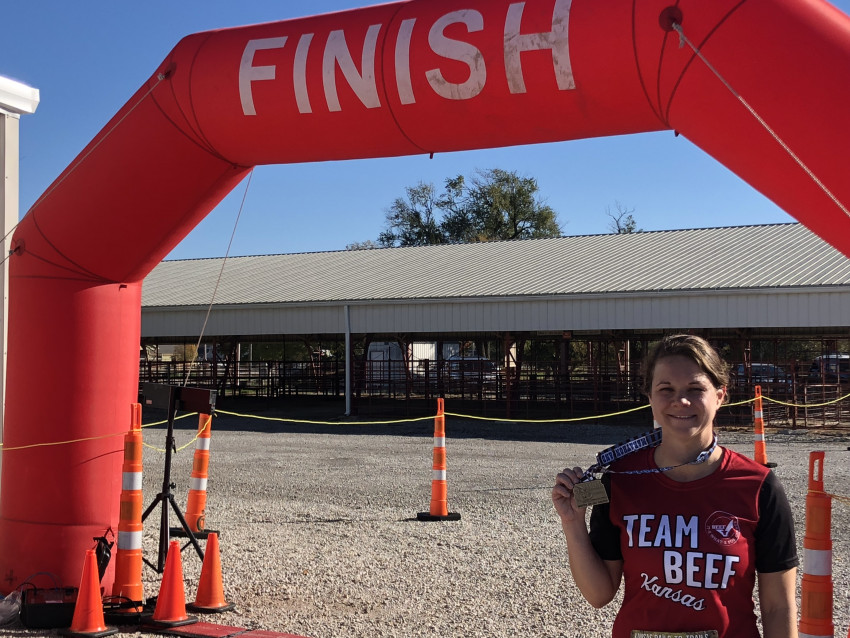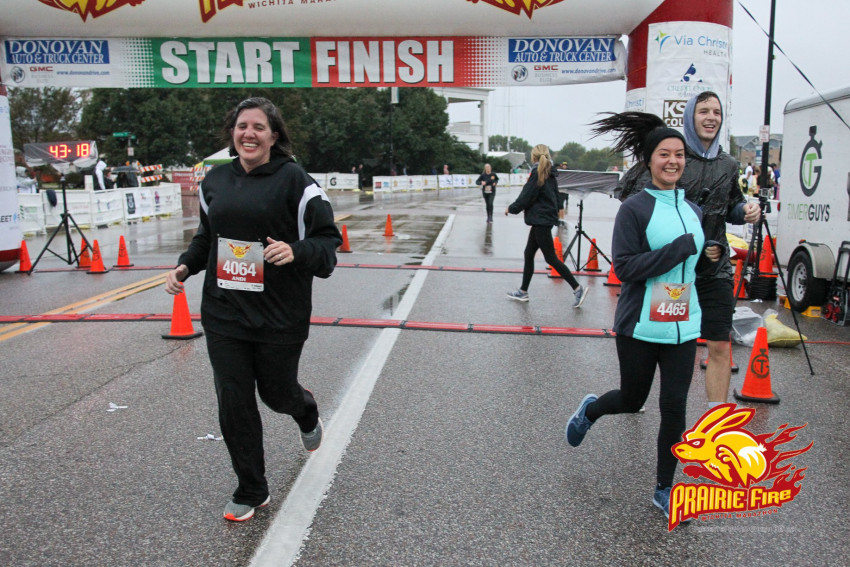By Meagan Cramer on February 1, 2021
Training for a 5K Race

Spring is a great time to pull out those running shoes and get your legs and arms pumping while enjoying the change in seasons. If you aren’t already a runner and you’re looking for a challenge, consider training for a 5K. (For those of us not familiar with runner’s lingo, five kilometers is 3.1 miles.)
The good news is there are many schedules already created to help you succeed in training for a 5K race. Simply get online and do a search for “training for a 5K” or “couch to 5K.” You’ll find a number of plans with many of them only taking six weeks.
“Training for a 5K is a great way to begin fun, intentional movement with minimal equipment and cost,” Kathleen Benson, a licensed and registered dietitian nutritionist who trains athletes online, says.
“A great thing about training is it’s easily able to be scaled to the individual’s abilities, with minimal coaching.”
If running isn’t of interest or you’d like to work your way up, Benson reminds us that walking a 5K is another great way to get your body moving. In fact, training for a 5K walk includes the amount of exercise recommended by the Centers for Disease Control and Prevention as the minimum amount to reduce your health risks and maintain optimum health.
STAYING MOTIVATED
How do you keep yourself motivated after you start training? Experts encourage people to sign up for a 5K event around the time your training will end so you have a goal to work toward. Participating in hosted 5Ks can also help you track your progress.
“If you have a competitive drive, 5Ks are a great way to see your improvement from one race to another without getting caught up in other people’s time,” Benson says.
Chelsy Champlin lives in Cedar Vale with her husband Marc and three kids Max, 5, Newt, 4 and Codie, 1. Running has been a thread throughout her life, and it started when she was in high school. The weekly miles she puts in ebb and flow depending on what’s happening in her life, but it’s something she always comes back to.
“I stop and start running all the time,” she says. “I can go long periods of time without running (typically after I have a child) and getting started is always the hardest part. Once I get going, it gets easier and easier.”
Just like Benson, Champlin recommends finding a local race and setting a goal to get started. She’s found a few other things keep her motivated, like tracking her progress and finding a running buddy.
After she’s found a race, Champlin plans her training schedule and puts it on a whiteboard in her home. When she gets a run in, she adds it to the whiteboard. Seeing it in front of her is a good reminder of what she’s done and what she’s working toward. Adding in a running partner makes it a social activity, which suits Champlin.
“Having someone who will go with me is a huge selling point,” she says. “Knowing you have someone who’s counting on you to join them really helps.”
For Andi Dale, the running bug came much later in life. She farms and ranches with her husband, Kurt, in Comanche County and teaches middle school science. She started running just two years ago by working toward a 5K and has now conquered a 10K (6.2 miles).
“I haven’t gotten along with my body for 48 years,” Dale says. “I feel strong when I run. For me, it has become an outward sign of the tough person I am on the inside.”
She explains that when she was younger, asthma and allergies kept her from finding joy in physical activities — especially those involving running.
“I was the kid in junior high P.E. class who ran halfway down the basketball court and had to stop because I was wheezing,” she says.
But after a health scare in 2014, she decided it was time to make some lifestyle changes. She cut out caffeine, gets a massage every month and looks for things that help her manage her anxiety, which in turn helps with her allergies and asthma. And most times, her asthma stays manageable.
“I usually take an inhaler with me,” she says. “I’ve found anything I can do to boost my immunity pays off.”
Unlike Champlin, Dale prefers to run alone and uses the time to decompress.
“I’m an introvert and it’s a guaranteed 30 minutes to an hour by myself and an audio book,” Dale says.
And although she doesn’t have a running buddy, she does have a mentor. Her friend, Becky Bruckner, who lives in Coldwater, encouraged Dale to sign up for her first 5K. She also joined her at the start and finish line of that first race.
“Becky has been a great cheerleader the last two years,” Dale says. “She is always encouraging me to do more than I think I can and offering grace when I've taken a couple days or weeks off.”
FINDING RACES
If you’re looking for a race, chances are there are a handful of options in your community or close by. In fact, several county Farm Bureaus host annual 5K runs to connect with community members and raise money for local causes. Last year, even with COVID-19 wreaking havoc on most events, Chautauqua County Farm Bureau saw a good turnout with their annual St. Patrick’s Day run on March 14.
“We had close to 50 people sign up and about half came to run,” Kristi Lofton, coordinator for the local county Farm Bureau, says. “We were able to raise $500 for our Ag in the Classroom fund and that was similar to other years.”
McPherson County Farm Bureau has hosted a 5K race for the last five years and partners with their local Chamber of Commerce. Mitz Fawl, McPherson County Farm Bureau coordinator, says they use the run to highlight rural areas and promote agriculture.
“We go to a different place in the county every year,” Fawl says. “We place signs throughout the race that highlight fun farm facts and include a one-mile walk for kids so they can participate, too.”
Funds from the race go toward a local scholarship to help a student in the community attend college and study agriculture.
“The race really is a community effort,” Fawl says. “FFA groups have helped us in the past and every year we get about 100 people to join us.”
No matter what your level of activity currently is, use this change in seasons as an opportunity to try something new. For members who have healthcare through Kansas Farm Bureau Health Plans, make sure you access the Live Better program, an online tool with focus areas to help you be more active, manage stress and improve your diet. This tool is included in all the traditional plans.








